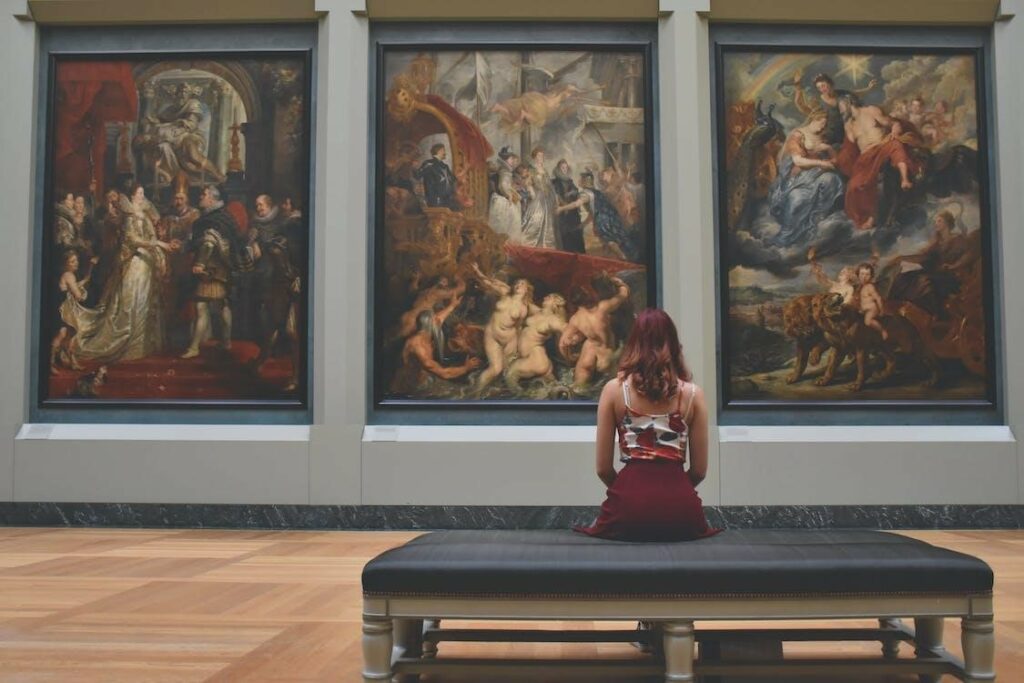While we tend to think of the value of art as deriving from its subjective and emotional resonance, as it turns out, it can also act as a source of income while it’s decorating your wall. Investing in works of art has long been a way to conserve and build wealth, and in 2021, estimates show that the global art market reached a value of $65 billion – up nearly thirty percent from the previous year.
So, why exactly can investing in art be so valuable, especially when compared to other types of market investments? What can it mean for your finances, and how does it drive the behind-the-scenes of the art world? Read on to find out.
Why invest in art?
The main reason that artwork can be a strong investment is due to the very same timelessness that attracts us to it aesthetically. Because good art tends to only grow in value as it becomes more well-known, investing in the right piece could ensure that the money you put into it actually appreciates significantly over time.
What’s more, the value of artwork has historically almost always exceeded the rate of inflation, making it an incredibly low-risk investment, since it will rarely drop below its original value.
According to online investing experts such as brokerschart.it most portfolios with investments in art funds see better returns than average – in some cases, up to 18% greater returns over ten year.

Museum loans and auctions
This solid return on investment is due to the unique nature of art, and the fact that its value is determined firsthand, through auction sales. A piece of art is always worth whatever someone is willing to pay for it. While this value is determined subjectively and culturally, it tends to hold fairly steady, and isn’t subject to rapid changes the way many other stocks and bonds are.
There’s another way that your art can grow in value as well; if a piece you own is valuable enough to be put on loan to a museum or gallery, you can receive a steady source of income while also exposing your art to the public, further increasing its popularity.
Art funds and fractional shares
While we tend to think of art investing as something that happens on a large scale – like, for example, the scale of the Andy Warhol piece that recently sold for a record-breaking $165 million – buying a work of art is becoming increasingly accessible even for the moderately wealthy.
One way to break into the market is through buying a fractional share of an artwork, where you invest in only a small slice of a painting or sculpture. While this won’t grant you ownership of the work, it can be a great way to diversify your investment portfolio and start devoting a share of your wealth to art. Accounts like these can be started with investments as low as $1000.
Another option is to invest in an art fund, which is a type of fund that invests your wealth specifically into blue-chip – i.e., outsider certified – artworks from established and mid-career artists, whose value is almost guaranteed to grow. You can find offerings like this on most robo-advisor platforms, and even through some brokers, such as the Dutch-based Degiro.
Investing in art and artists
One of the best aspects about putting your money into artworks is that it can help support a global cultural institution and provide income for up-and-coming artists. While it may be a safer bet to put your funds towards a piece of art that already has a reputation to back it, if you are confident in your artistic eye, finding a promising newcomer to back can pay off tenfold in the long run. While this is a highly speculative endeavor when compared with investing in blue-chip art, if you’re passionate about the art world it can be an exciting and rewarding way of investing.
In addition, art investments give you an immediate return that is different from almost any other investment. While it may give you some enjoyment to invest in a company or product that you feel confident supporting, it can’t come close to matching the feeling of seeing a prized artwork hanging on your wall or displayed in your home.
More ways to invest
If you want to get into investing in art, and investing more generally, an online platform that provides broker reviews is a great place to get information. On sites like BrokersChart, you can obtain insight into many different traders such as AvaTrade: https://brokerschart.it/migliori-brokers/avatrade, and check everything from minimum deposits to the types of accounts that are available.
You can also easily compare different brokers and view all their stats a glance, making it simple to find the one that works for you. With the help of brokers, your can steadily grow your portfolio and continue making the choices that will bring you the most benefit in the long run.
Overall, expanding your finances into the world of art is a great way to grow both culturally and monetarily. Whether its with fractional shares or by starting your collection through the purchase of a masterpiece, you’re almost certain to see returns right away.
